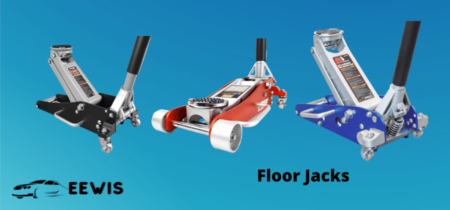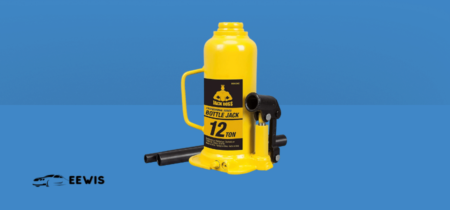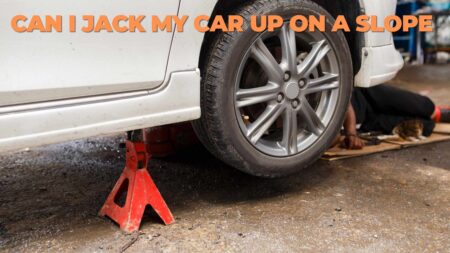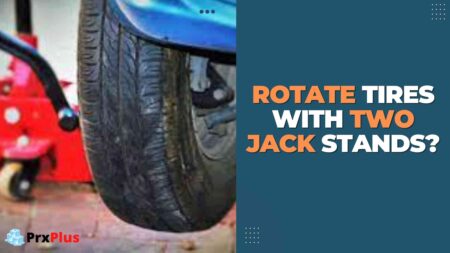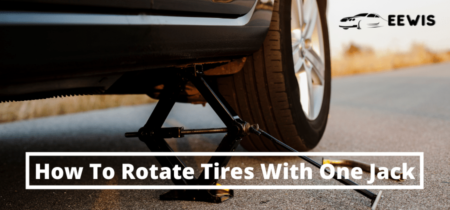How To Jack Up A UTV In A Field
Are you thinking of jacking your UTV up? If yes, you will learn about jacking up your UTV in the field in this guide.
Therefore, you will require a car jack, and it could be a scissor jack or a scissor jack. Apart from that, it would be great if you also had concrete ground to lift your UTV harmlessly. With the jack, you will also need a stand to support it.
Also, you should know the elements of jacking up your ride to keep a strategic distance from any potential harm. Jacking these engines can be extremely dangerous if not done correctly. It would be best to fit the jack under a suitable jack point to bypass any damage.
However, it’s not that simple. There are some steps to follow. Here is How to Jack up a UTV in a Field. Let’s begin.
Safety Must Be Your First Consideration
Jacking up a UTV can be unsafe in almost any condition because you are lifting tons of weight off the ground. And even possibly crawling underneath that vehicle to do some work.
Unless you do this incorrectly, all that weight will fall onto you and injure you. In the best-case scenario, you impair some parts and have to spend more money.
Related Article: 8 Easy Steps on How To Jack Up An SUV?
So, I’ll explain the distinct steps of jacking up. And you can learn the safest way to avoid unpleasant situations. Therefore, you must know how to jack up your ride to bypass any injuries.
Steps To Jack Up A UTV
Now come to the step-by-step procedure that you have to follow:
Search For A Concrete Ground
It might be overwhelming if you could get concrete or a solid surface to lift your UTV, which is great for secure jacking. A substantial ground gives a solid base for a jack. To prevent sinking, the jack must have a sturdy base to uphold all the weight of your UTV.
If you cannot find a solid ground for the jack, you have to strengthen its base on the field. Place a rectangular piece of wood or a large rock beneath the jack. It would be suitable if you jacked right there.
If the ground is sufficiently hard, and you think it will support the weight without sinking, then you should jack right there. As a result, with a flat tire, it is impossible to move the UTV.
To chock UTV wheels, follow this step:
Those wheels that will remain on the ground need to be blocked. It will prevent the accidental movement of the UTV. It can help you a lot if you also pull in the E-brake. After that, chock the tires properly. You will probably have some extra chocks.
You can use woods or rocks to block the wheel in the field or outdoors. Make sure the UTV is stable. Put the chocks close to the wheels, which you don’t want to lift. When raising the front wheels, ensure that the rear wheels are blocked, and vice versa.
Locate Correct Jack Points
A stable jacking requires a firm base; the jack point that strikes the jack must also be sturdy enough to resist falling into the UTV. To locate the jack points, study the instruction manual of your UTV.
The correct jack points are beneath the frame of the UTV. Jack’s points on the UTV frame are strong. To lift the front and rear ends at once, the middle of the two front or back wheels is a good option—so more tips on jack points in the subsequent headings, please go ahead!
Place A Jack Beneath The Jack Point
After locating a jack point, get a jack and place it beneath the point. Ensure the jack can support the weight of the UTV. Considering that most UTVs have approximately 2,000 pounds, most jacks can lift this much weight.
If you are in the field, floor jacks are the most suitable hydraulic jacks that you can use for lifting your UTV. It is not possible to carry these jacks off-road because they are heavier. Scissor jacks or high-lift jacks are the most reasonable options in this case. They’re lightweight, which means that you can keep and carry them in your UTV.
Alternatively, use a jack with a high lifting capacity, especially maximum elevation. Most jacks would not work appropriately with UTVs because of their elevated heights.
Pump The Jack-up
Following the rules, it’s time to stroke. Lift your UTV by pumping the jack. To replace a tire, elevating the UTV a few inches suffices to remove the tire and replace it. Using hydraulic jacks, you can raise the load by pulling the handle up and down.
We suggest it if you prefer to use a jack stand to install a jack stand beneath the UTV and lift the UTV sufficiently. Read the next section for more information on jack stands.
Installation of A Jack Stand
After the jack raises the UTV, place a jack stand near it. You should never get under a UTV unless it is resting on a jack stand, not just a jack. Likewise, the jack stand should support the UTV’s weight. Most jack stands can hold the UTV. It is because UTVs are lighter than most hefty vehicles.
When installing a jack stand, where is the best place? The answer is: Jacks and stands follow the same rules. First, use a jack that also functions as a jack stand! Some jacks work as both jacks and stands, such as scissor jacks and Hi-lift jacks.
Also, bottle jacks can have all-in-one traits. For example, Alltrade all-in-one bottle jacks can meet the need. You will not need a separate jack standpoint in these situations.
Put the jack beneath the frame trail with floor jacks and lift it. When you require changing a tire, set a jack stand near it. Positioning a jack close to the tire and then the stand next to it is more complicated because of the low area and the axle’s height.
UTV frames have outstanding jack points to put a jack stand beneath the body. You should install them underneath the frame or body if you cannot put a jack or jack stand close to the tires.
Get Down The UTV
You have completed the project, and everything went smoothly, so now it’s time to lower the UTV. You can lift the UTV again after installing the jack stands. Remove the jack stand from the UTV by raising it high enough.
After that, turn the jack’s lever counterclockwise and lower the UVT. You have done the job. Congratulations! You’ve successfully raised and lowered your UTV. For more information on how to jack up a UTV in the field, continue reading.
A UTV can be jacked up off-road by the following steps:
Changing a flat tire on a trail may differ from the one described above. First, the ground won’t be hard enough. Check to see if it’s solid and suitable to jack the UTV.
You can also use woods or stones beneath the jack to provide a solid base without taking your UTV onto a solid surface. You should also block the wheels if you don’t want to lift them with wood or stones. Make use of them, mainly if the ground beneath you is not solid and level. You should push the UTV on a level surface if you require pushing it.
Jack’s sinking is a big issue when the UTV goes out of hand. It’s crucial to block the wheels on a solid surface. You can use any jack to jack up your UTV by following the instructions above.
Final Words
To conclude this guide, be careful when doing this job. You must know how to finish each step. Without the right tools, such as the correct jack and jack stand otherwise, you might damage your UTV or yourself.
A scissor jack would be helpful when the terrain is uneven. Therefore, it is much better than attempting to jack up without a jack. We are sure that this guide article has given you all the information you want to know about how to Jack up a UTV in a Field.



